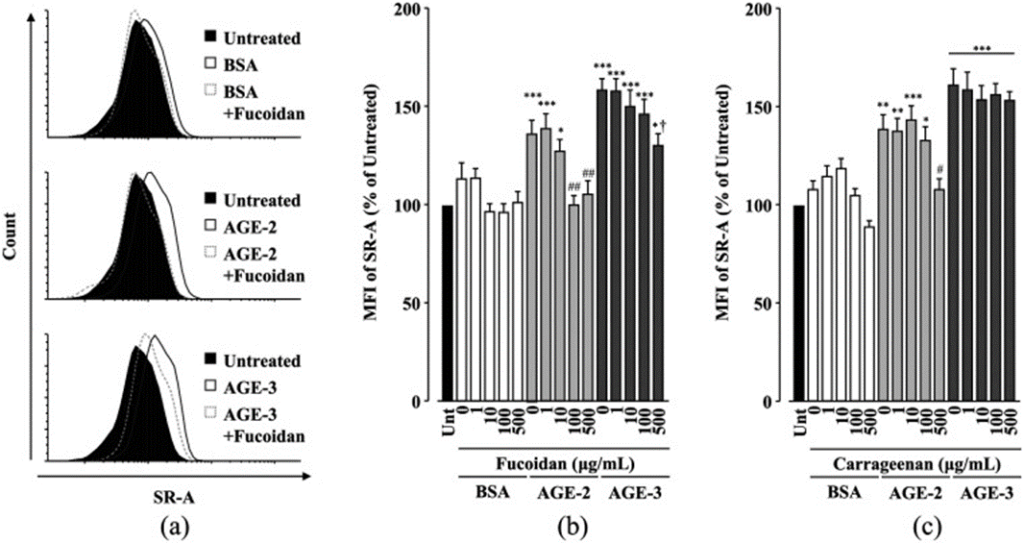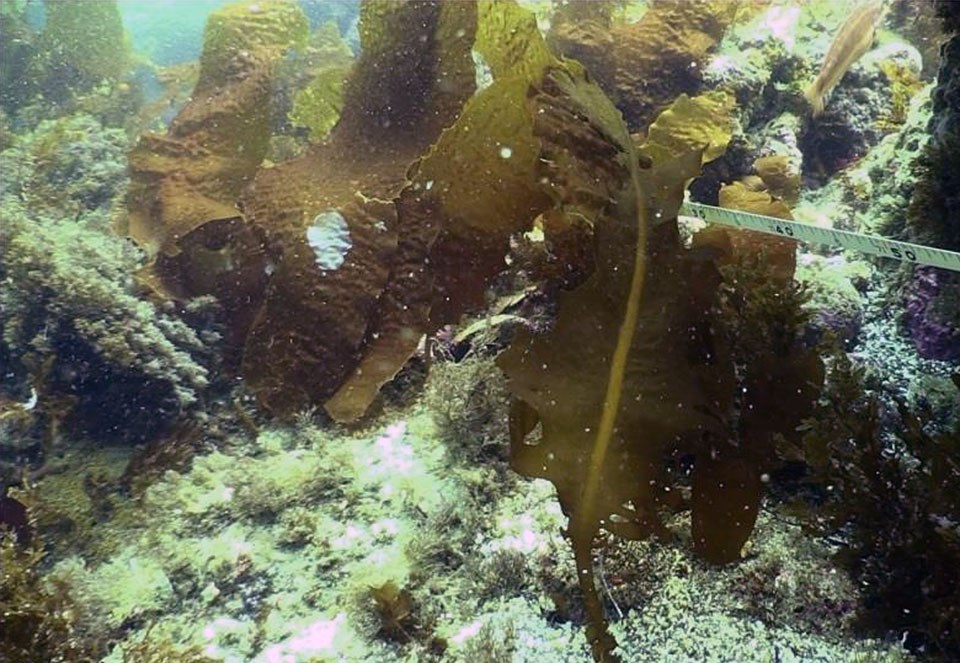Advanced glycation end products, highly toxic advanced glycation end products derived from glyceraldehyde (Advanced Glycation End Product-2) and glycolaldehyde (Advanced Glycation End Product-3), are biologically reactive compounds associated with diabetic complications.
Uptake of advanced toxic glycation end-products is inhibited by fucoidan, a sulfated polysaccharide. On the other hand, an antagonistic ligand for scavenger receptors, making sulfated polysaccharides a novel candidate for the treatment of advanced glycation end-product-related diseases. Hence, in this blog, I present the study, “A comparative study of sulfated polysaccharide effects on advanced glycation end-product uptake and scavenger receptor class A level in macrophages“. This study compares the effects of six sulfated and non-sulfated polysaccharides on the absorption of advanced toxic glycation end-products in RAW264.7 cells.
In this study, using sulfated and non-sulfated polysaccharides, Fucoidan derived from Fucus vesiculosus, dextran 500,000, Low Molecular Weight (LMW) dextran sulfate, High Molecular Weight (HMW) dextran sulfate, chondroitin sulfate C sodium salt, heparin, hyaluronic acid, neokarahexaose-24,41, 3,5-tetra-O-sulfuric acid was dissolved in ultrapure water. λ-carrageenan was dissolved in ultrapure water and incubated at 60°C for 30 minutes. All reagents were prepared under sterile conditions, also treated cells with each sulfated polysaccharide. Inhibition of AGE uptake in macrophages may be significant for preventing and treating age-related diseases.
Furthermore, cells were treated simultaneously with each sulfated polysaccharide. They fluorescently labeled Bovine serum albumin (BSA), AGE-2, or AGE-3 (200 μg/mL) to compare the effects of individual sulfated polysaccharides on the uptake of toxic AGEs. So the fluorescence intensity was measured by the following method. The study proved that AGE (AGE-3) derived from glycolaldehyde exhibited the lowest fluorescence intensity (data not shown). In RAW264.7 cells, AGE-2 and AGE-3 uptake increased at 200 µg/mL, and AGE-3 increased at 200 µg/mL. (See Figure 1 a). It indicates that AGE-3 is more modified by his BSA than his AGE-2.
In addition to 10–500 μg/mL algal sulfated polysaccharides, 100–1000 μg/mL HMW dextran sulfate inhibited the uptake of toxic AGEs. (See Figure. 2 a). And for all polysaccharides examined, no cytotoxic effects were observed when the concentration was increased to 500 μg/mL (fucoidan, carrageenan, hyaluronic acid) and 1000 μg/mL (HMW dextran sulfate, chondroitin sulfate, heparin.
Fucoidan at 100 μg/mL and 500 μg/mL and carrageenan at 500 μg/mL completely abolished the upregulation of Scavenger receptor-1 class A (SR-A) by AGE-2. In contrast, the upregulation of SR-A by AGE-3 was inhibited only by 500 μg/mL fucoidan. (See Figure 3) HMW dextran sulfate did not affect toxic AGE-induced upregulation of SR-A, but 100–1000 μg/mL HMW dextran sulfate increased SR-A levels in BSA-treated cells. Toxic AGEs induce upregulation of SR-A.
Among the glycosaminoglycans that did not inhibit toxic AGE uptake in RAW264.7 cells, chondroitin sulfate at 1000 μg/mL reduced AGE-3-induced upregulation of SR-A, did not diminish the AGE-2-induced upregulation of SR-A. On the contrary, neither heparin nor hyaluronic acid affected the upregulation of SR-A induced by toxic AGEs.
The study has also validated that algae-derived fucoidan inhibits toxic AGE uptake and upregulation of SR-A by harmful AGEs, whereas other sulfated polysaccharides have inhibitory activity. In contrast, algae-derived carrageenan inhibits toxic AGE uptake without affecting SR-A upregulation by AGE-3. Above all, the results suggest that fucoidan alone inhibits toxic AGE uptake mediated by suppression of toxic AGE-induced upregulation of SR-A. Additionally, inhibition of toxic AGE uptake by carrageenan and dextran sulfate leads to SR-A upregulation without SR-A occurring independently of expression. Furthermore, chondroitin sulfate attenuates AGE-3-induced upregulation of SR-A without inhibiting AGE-3 uptake.
The study reported that the immunoreactivity in macrophages differs between Fucoidan and carrageenan. Fucoidan exerted antidiabetic effects by improving glucose intolerance and preventing diabetic complications in animal models. It was also revealed that Fucoidan and Carrageenan have different macrophage immunoreactivities. Furthermore, fucoidan exerted antidiabetic effects by improving glucose intolerance and preventing diabetic complications in animal models.



Source: Diab Vasc Dis Res. 2020 Jan-Feb; 17(1): 1479164119896975. doi: 10.1177/1479164119896975
